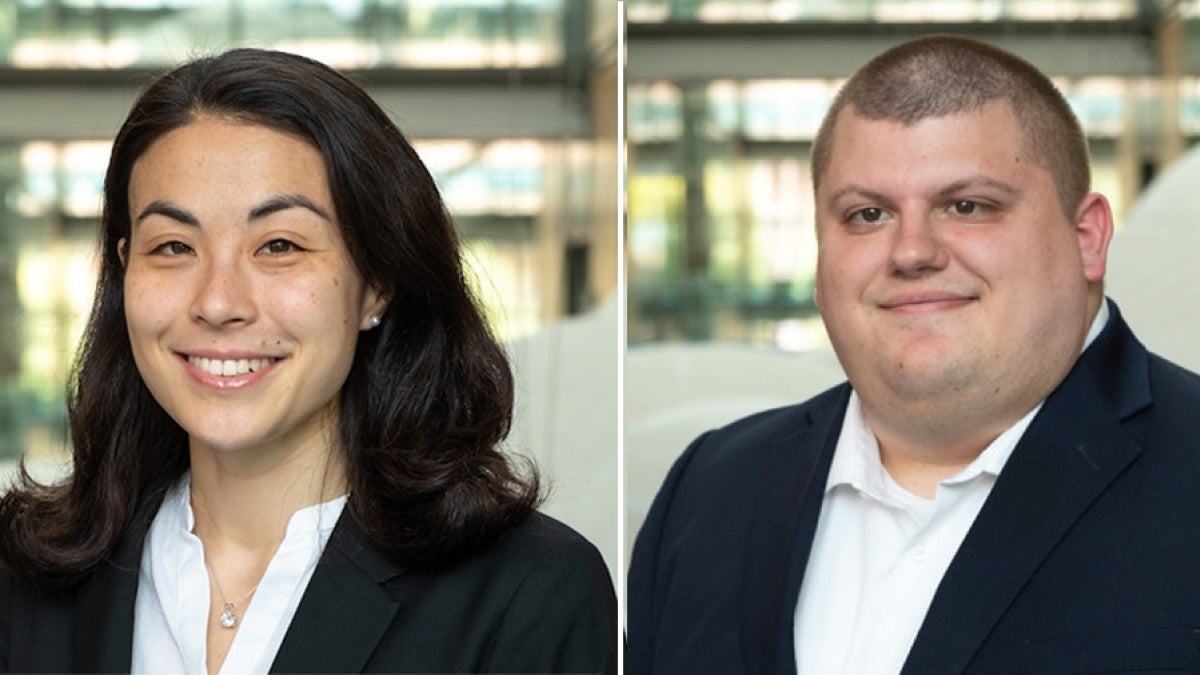School of Molecular Sciences faculty bring attention to diversity, equity, inclusion in academia

Laura Ackerman-Biegasiewicz and Kyle Biegasiewicz.
2020 was a year of upheaval that brought attention to a wide range of areas in social injustice and inequity, from the Black Lives Matter and LGBTQ+ movements to inequities in access to health care to the rise of overt white supremacist groups.
Reflecting on these events inspired Arizona State University School of Molecular Sciences assistant professors Laura Ackerman-Biegasiewicz and Kyle Biegasiewicz to look inward at their own spheres of influence and examine sources of injustice and inequity in academia. Together with nine other junior faculty from different institutions across North America, their perspectives and suggestions to promote changes in academic culture to improve diversity, equity and inclusion were recently published as an editorial in the American Chemical Society journal ACS Central Science.
In their editorial, the group approached the problem from an interesting and uniquely chemical perspective, that of retrosynthetic analysis. Retrosynthesis involves deconstruction of a desired target molecule into simpler starting structures and a convergent chemical pathway that connects them with the more complex target structure. The group suggests an analogous approach, decomposing diversity and inclusion into basic starting principles in order to define a guiding convergent social pathway toward a resolution to these complex societal issues.
The authors all pledged to make changes in support of developing a model where academia demonstrates leadership through practice in the very principles of diversity, equity and inclusion that it teaches.
“Many of us have been victims of the destructive norms that pervade our field; all of us have witnessed them in practice,” Ackerman-Biegasiewicz said.
Instead of accepting this as the norm, they talked about what they can do to make positive, meaningful changes based on the goals they would like to achieve. Ultimately, the desire is to create supportive learning communities that are vital to growing and retaining a healthy, diverse research group.
The group suggest increasing awareness, improving approachability (of organic chemistry), teaching inclusively, providing both mentorship and sponsorship, and building community as starting principles for such model-building. Implementing meaningful change to embedded social structures is potentially an overwhelming task, but the value in the group’s approach is that it identifies realistic and readily accessible starting points that can be worked on today and that can be connected to a viable pathway to change.
“Our junior faculty are bringing to the school a raised awareness of the exclusionary and hegemonic nature of traditional science culture, and a determination to make meaningful change that is inspiring,” said Ian Gould, School of Molecular Sciences interim director. “I am proud of the way that Laura and Kyle are leading the charge towards a more inclusive and equitable environment for our school and our discipline.”
“We are committing to building research groups founded on mutual respect between professors and graduate students, emphasizing compassion and mental and physical health,” Biegasiewicz said.
Graduate students are often expected to work long hours and sacrifice relationships and at times their health under the pressure of their research advisers.
“The traditional model of unhealthy, excessive and often unrealistic expectations of graduate students negatively impacts diversity,” Ackerman-Biegasiewicz said.
Women with families and low-income students are particularly impacted by traditional constraints. Graduate students are sometimes advised that even their relationships must take a back seat to their research and their career.
“As a couple, we were advised multiple times to go our separate ways so we could focus on our research and our careers separately,” Ackerman-Biegasiewicz said. “We ignored that advice and worked harder to build our careers together.”
“Change begins with us,” Biegasiewicz said. “We don’t have to repeat the same steps over and over. We can look back and create new pathways to a better future.”
More Science and technology

Indigenous geneticists build unprecedented research community at ASU
When Krystal Tsosie (Diné) was an undergraduate at Arizona State University, there were no Indigenous faculty she could look to…

Pioneering professor of cultural evolution pens essays for leading academic journals
When Robert Boyd wrote his 1985 book “Culture and the Evolutionary Process,” cultural evolution was not considered a true…

Lucy's lasting legacy: Donald Johanson reflects on the discovery of a lifetime
Fifty years ago, in the dusty hills of Hadar, Ethiopia, a young paleoanthropologist, Donald Johanson, discovered what would…